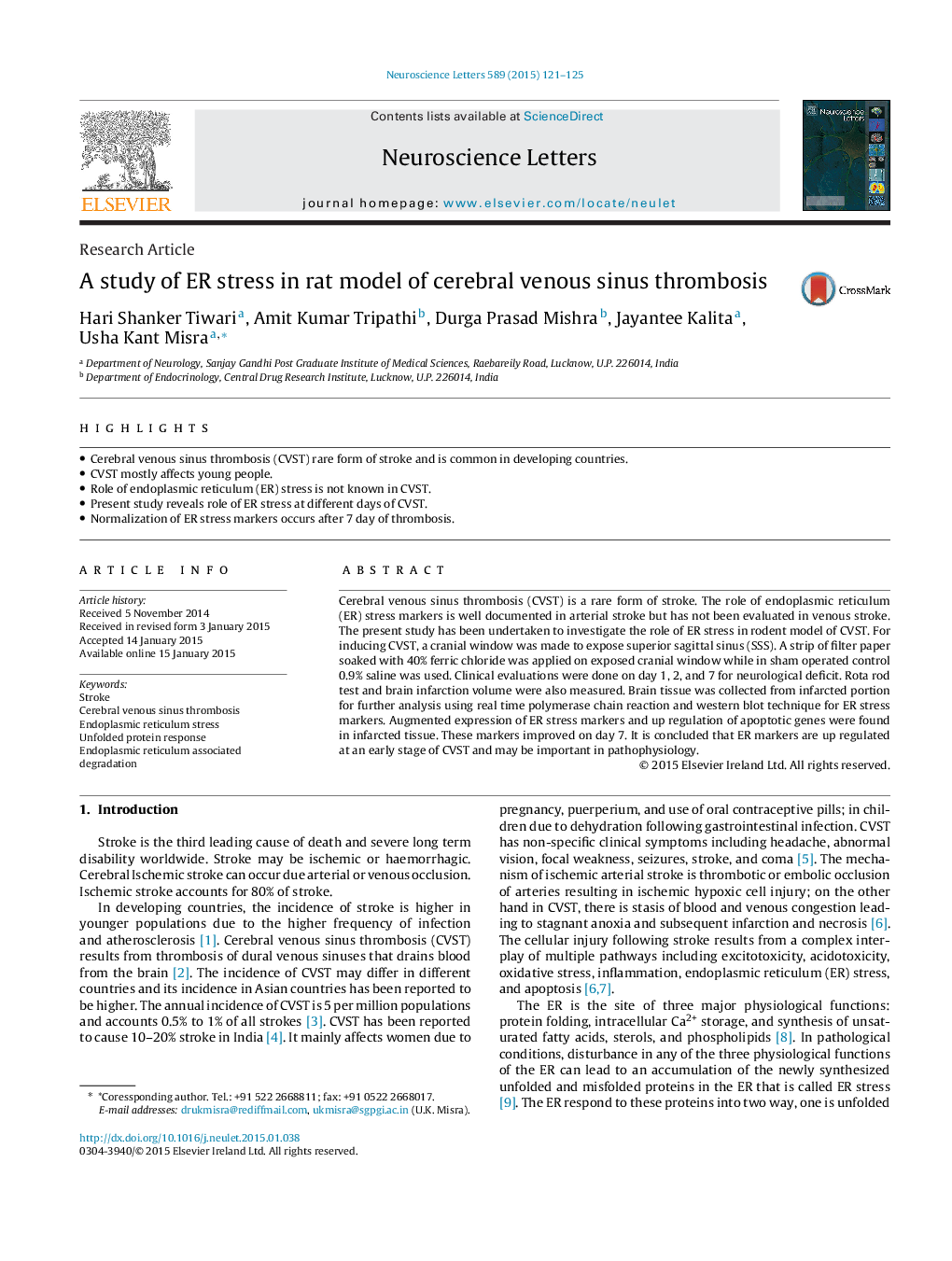| Article ID | Journal | Published Year | Pages | File Type |
|---|---|---|---|---|
| 6281096 | Neuroscience Letters | 2015 | 5 Pages |
â¢Cerebral venous sinus thrombosis (CVST) rare form of stroke and is common in developing countries.â¢CVST mostly affects young people.â¢Role of endoplasmic reticulum (ER) stress is not known in CVST.â¢Present study reveals role of ER stress at different days of CVST.â¢Normalization of ER stress markers occurs after 7 day of thrombosis.
Cerebral venous sinus thrombosis (CVST) is a rare form of stroke. The role of endoplasmic reticulum (ER) stress markers is well documented in arterial stroke but has not been evaluated in venous stroke. The present study has been undertaken to investigate the role of ER stress in rodent model of CVST. For inducing CVST, a cranial window was made to expose superior sagittal sinus (SSS). A strip of filter paper soaked with 40% ferric chloride was applied on exposed cranial window while in sham operated control 0.9% saline was used. Clinical evaluations were done on day 1, 2, and 7 for neurological deficit. Rota rod test and brain infarction volume were also measured. Brain tissue was collected from infarcted portion for further analysis using real time polymerase chain reaction and western blot technique for ER stress markers. Augmented expression of ER stress markers and up regulation of apoptotic genes were found in infarcted tissue. These markers improved on day 7. It is concluded that ER markers are up regulated at an early stage of CVST and may be important in pathophysiology.
